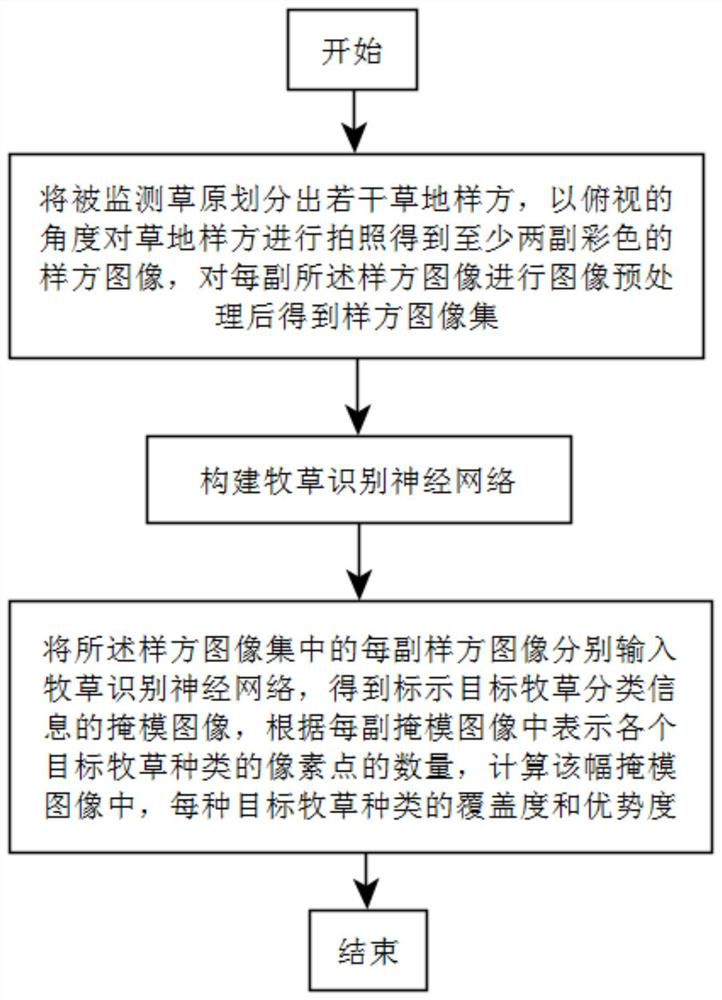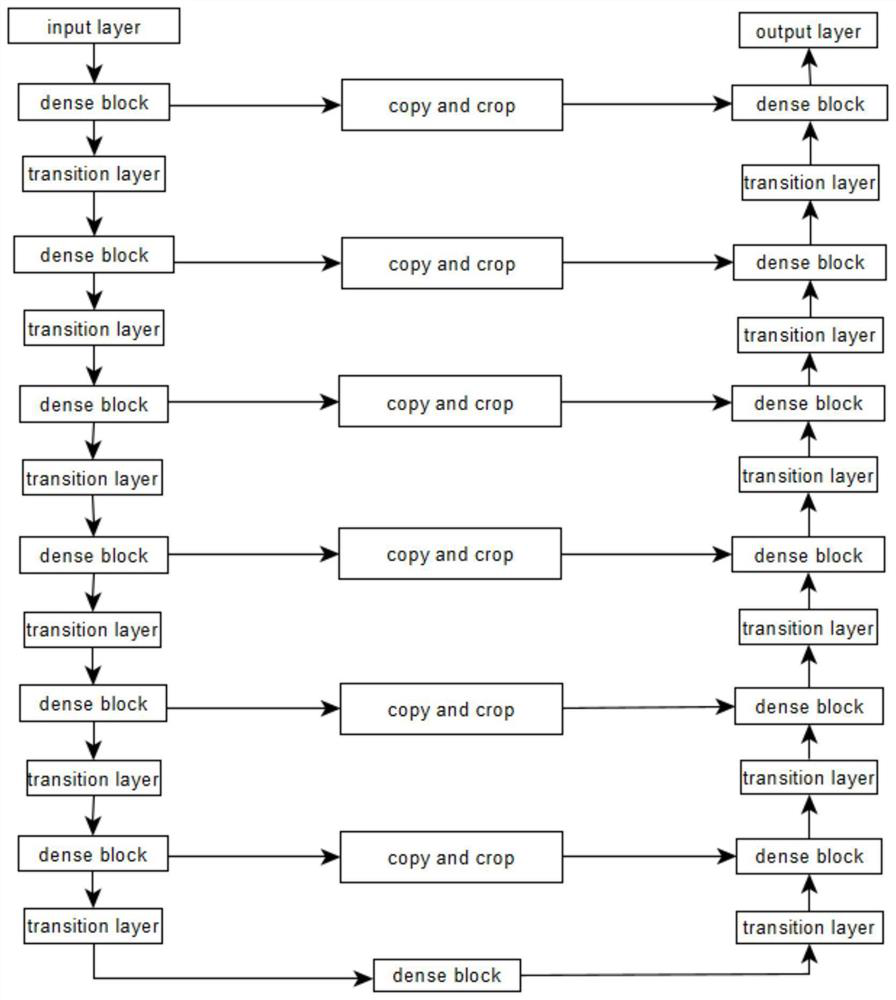Forage dominance recognition method based on convolutional neural network
A convolutional neural network and neural network technology, applied in the field of grass dominance recognition based on convolutional neural network, can solve problems such as poor remote sensing technology, laborious grassland survey work, mixed growth, etc., and achieve improved recognition accuracy and reliable reference The effect of data
- Summary
- Abstract
- Description
- Claims
- Application Information
AI Technical Summary
Problems solved by technology
Method used
Image
Examples
Embodiment
[0059] Taking the desert grassland located in Siziwang Banner, Ulanqab City, Inner Mongolia Autonomous Region as an example, a method for identifying pasture dominance based on convolutional neural network, the flow chart is as follows figure 1 shown, including the following steps:
[0060] S1. Divide the monitored grassland into several grassland quadrats, take photos of the grassland quadrats from a top-down perspective to obtain at least two color quadrat images, and perform image preprocessing on each of the quadrat images to obtain the quadrat images set.
[0061] S2. Construct the pasture identification neural network, the steps are as follows:
[0062] S21. Select 5 types of target herbage, obtain 10 color target herbage images for each type of target herbage, perform image preprocessing and labeling on each of the target herbage images to obtain an original data set. Here, in order to ensure the diversity of images used for training models, not only images collected ...
PUM
 Login to View More
Login to View More Abstract
Description
Claims
Application Information
 Login to View More
Login to View More - R&D
- Intellectual Property
- Life Sciences
- Materials
- Tech Scout
- Unparalleled Data Quality
- Higher Quality Content
- 60% Fewer Hallucinations
Browse by: Latest US Patents, China's latest patents, Technical Efficacy Thesaurus, Application Domain, Technology Topic, Popular Technical Reports.
© 2025 PatSnap. All rights reserved.Legal|Privacy policy|Modern Slavery Act Transparency Statement|Sitemap|About US| Contact US: help@patsnap.com



